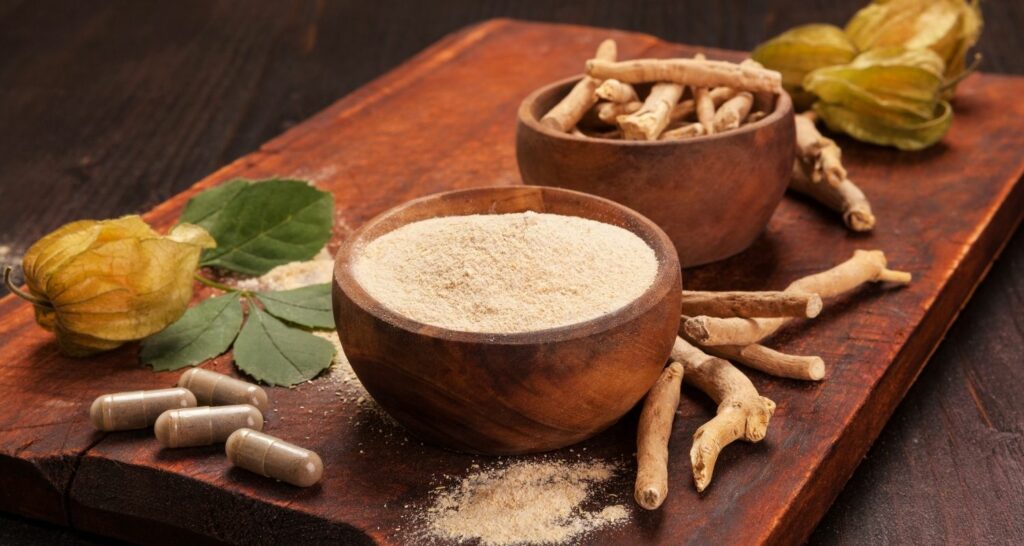There are so many natural remedies in the plant world. We’ve become so accustomed to taking medications for what ails us that we’ve forgotten that there are other, more natural options. Some of these medicinal herbs and spices can be used regularly for prevention. Others can be used therapeutically as well. Maybe you remember when your grandmother bustled off to the kitchen to whip up a concoction when you weren’t feeling well? Turns out, in many instances, science is proving what grandma already knew: that you can have an all-natural medicine cabinet at your fingertips.
Keep reading, it might just make you take a look at your kitchen garden or spice rack a little bit differently.
Are Spices Good For You?
Medicinal herbs and spices have been used for thousands of years in Traditional Chinese Medicine and Ayurveda. While I’ve talked about how to use natural anti-inflammatories, there are plenty of other ways to use herbs and spices to benefit your health.
As always, be sure to consult your doctor before indulging in any of these spices therapeutically.
Ways To Use Medicinal Herbs And Spices
Using medicinal herbs and spices can be as simple as cooking. Many of these can simply be added to food just for their amazing flavor — the health benefits are just added perks.
When you learn to cook with whole foods and use simple recipes, these herbs and spices really shine! They are a great way to increase flavor without adding fat, sodium, or many calories to a dish.
Chili Peppers
Spicy peppers can be a great way to kick up the flavor of your food and get in some capsaicin, the compound that gives peppers their heat. Capsaicin has been studied for its ability to possibly reduce pain, increase antioxidant activity, and even fight cancer. It has also been touted as a metabolism booster.
Ginger
Ginger is one of those spices that seems to be able to do it all. It adds a complex and rather enjoyable bite to food, and can be an antioxidant, encourage weight loss, and improve fasting blood sugar. But perhaps its most well-known use is for combatting nausea. A traditional way to use ginger as an anti-nausea spice is to cut up the root and boil it in water for about 10 minutes. Strain the pieces of ginger and drink the tea.
Garlic
Oh garlic, where would so many of our dishes be without you? The bold flavor that garlic imparts to food is one of a kind and a favorite for obvious reasons. But when you’re enjoying pesto or garlic bread, you may actually be supporting your health, too.
Garlic can help ward off colds, reduce cholesterol, and lower blood pressure.
Cinnamon
Cinnamon’s earthy fragrance is one to enjoy at any time. But did you know that cinnamon also can affect blood sugar levels and help to decrease inflammation? Just another reason to add it to your morning oatmeal or even your coffee.
Fenugreek
This spice is popular in Ayurveda for its effects on blood sugar. Whether used as a spice, or as a tea, fenugreek has a nice, nutty flavor that brings complexity to many Indian dishes.
Rosemary
That fresh, pine-like smell of rosemary is completely intoxicating, and this beautiful herb can add some megawatt flavor to so many foods, from bread to chicken. But more than just a hardy and easy to grow herb, rosemary has anti-inflammatory properties that help it to fight seasonal allergies.
An Ayurvedic Recipe Using Medicinal Spices
In Ayurveda (the system of medicine originating in India thousands of years ago) there is a focus on digestion. Improving digestion can be an important step in creating better health. After all, as Hippocrates stated, “all disease begins in the gut.”
And it seems like scientists are coming up with new evidence linking gut health to overall health all the time.
One of my favorite ways to encourage healthy digestive function is with this easy and delicious Ayurvedic tea.
It combines three popular medicinal spices and you only need a few minutes to make it.
Ayurvedic Cumin, Coriander, & Fennel (CCF) Tea
Ingredients:
¼ tsp Whole Cumin Seeds
¼ tsp Whole Coriander Seeds
¼ tsp Whole Fennel Seeds
Combine the seeds in a tea strainer and place in your favorite mug. Pour boiling water over them and let them steep for about 3-5 minutes. Discard the spices. Enjoy warm, ideally before meals.
Medicinal Spices Are More Than Kitchen Staples
Some of these spices can be powerful and are ideal partners in the path to creating harmony within your body.
I hope this article has inspired you to start growing some of these herbs or stock your spice cabinet with them — and get cooking!
For more tips, be sure to download my free guide: Optimal Foods, Healing Spices, and Mind-Body Practices to Beat Autoimmune Disease.
References
“Health Benefits of Culinary Herbs and Spices – PubMed.” 1 Mar. 2019, https://pubmed.ncbi.nlm.nih.gov/30651162/.
“(PDF) Medicinal uses of spices used in our … – ResearchGate.” 1 Jul. 2020, https://www.researchgate.net/publication/342591176_Medicinal_uses_of_spices_used_in_our_traditional_culture_World_wide.
“Dietary capsaicin and its anti-obesity ….”
https://www.ncbi.nlm.nih.gov/pmc/articles/PMC5426284/.
“Review: Capsaicin may have important potential for promoting ….” 17 Jun. 2015, https://www.ncbi.nlm.nih.gov/pmc/articles/PMC4477151/.
“Capsaicin – an overview | ScienceDirect Topics – ScienceDirect.com.” https://www.sciencedirect.com/topics/neuroscience/capsaicin.
“Changes of serum adipocytokines and body weight following ….” 29 Aug. 2015, https://link.springer.com/article/10.1007/s00394-015-1027-6.
“The Effects of Ginger on Fasting Blood Sugar, Hemoglobin A1c ….” https://www.ncbi.nlm.nih.gov/pmc/articles/PMC4277626/.
“Efficacy of ginger for nausea and vomiting: a systematic … – PubMed.” https://pubmed.ncbi.nlm.nih.gov/10793599/.
“Ginger on Human Health: A Comprehensive … – NCBI – NIH.” 6 Jan. 2020, https://www.ncbi.nlm.nih.gov/pmc/articles/PMC7019938/.
“Preventing the common cold with a garlic supplement: a double ….” https://pubmed.ncbi.nlm.nih.gov/11697022/.
“Garlic as a lipid lowering agent–a meta-analysis – PubMed.”
https://pubmed.ncbi.nlm.nih.gov/8169881/.
“Effects of Allium sativum (garlic) on systolic and diastolic blood ….” https://pubmed.ncbi.nlm.nih.gov/24035939/.
“Anti-inflammatory activity of cinnamon (C. zeylanicum and C. cassia ….” https://pubmed.ncbi.nlm.nih.gov/25629927/.
“Effect of Trigonella foenum-graecum (fenugreek) seeds on ….” https://pubmed.ncbi.nlm.nih.gov/11868855/.
“Comparative study of rosmarinic acid content in some … – NCBI – NIH.” https://www.ncbi.nlm.nih.gov/pmc/articles/PMC3307200/.
“Extract of Perilla frutescens enriched for rosmarinic acid, a … – PubMed.” https://pubmed.ncbi.nlm.nih.gov/14988517/.



